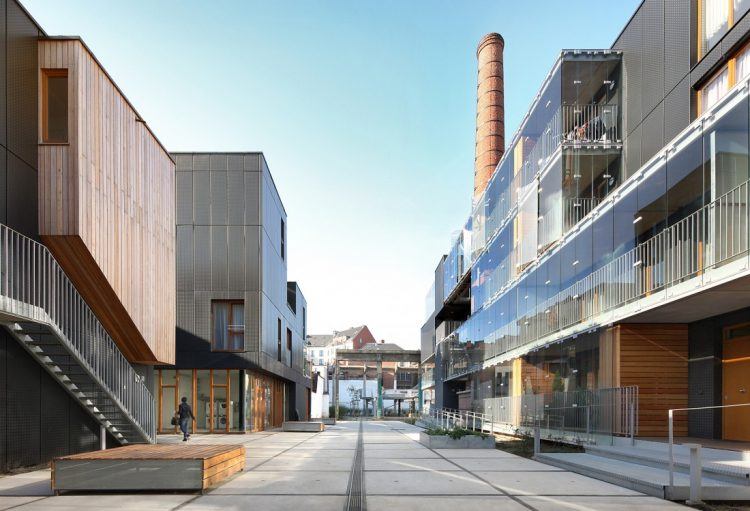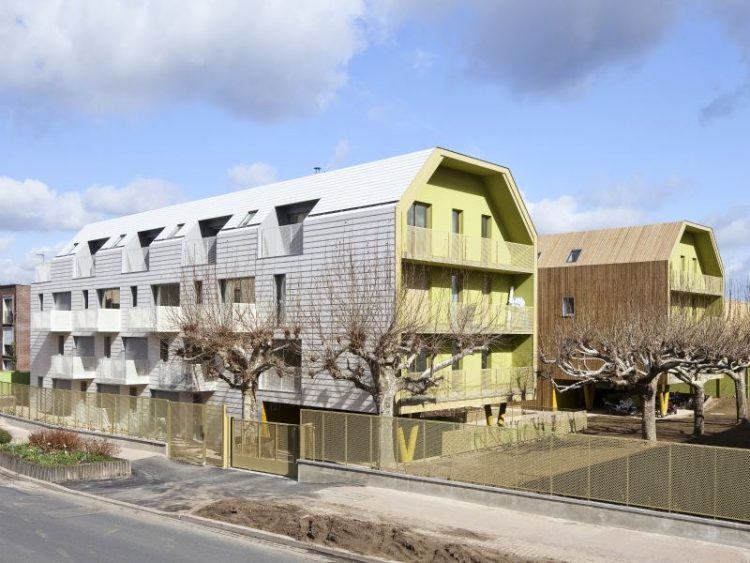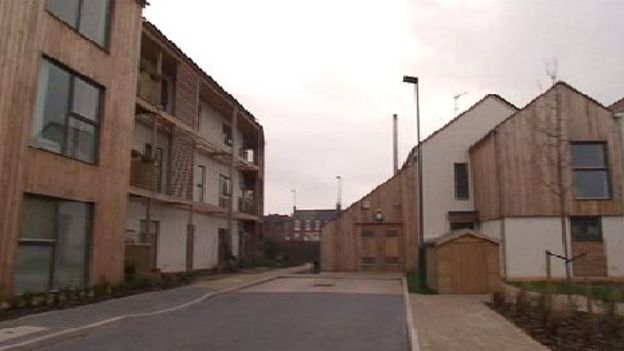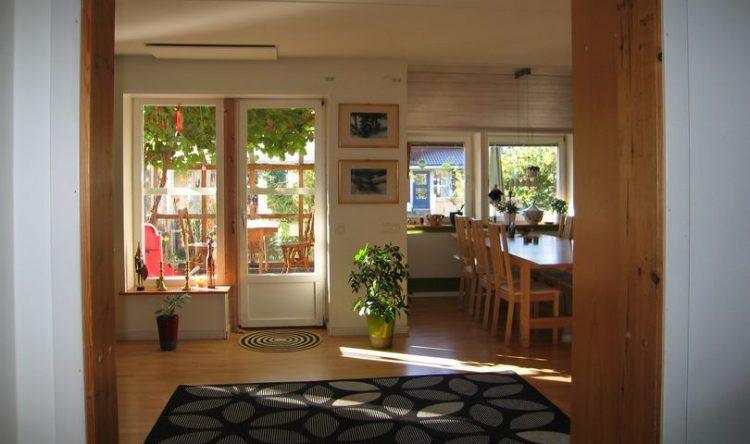
With the world population growing and cities becoming increasingly crowded, governments worldwide are struggling to provide for people who need help with housing. It is a difficult task to provide low-cost spaces for individuals and families which is well-designed and attractive. In previous generations, many countries built square apartment buildings to accommodate the most amount of people for the least cost. It has always been challenging to make budgets stretch to help all those who are in need of it.
But modern public housing is turning more toward creating not only beautiful living spaces but those that save money due to smart designs and innovative technologies. Eco-friendly buildings are at the top of the list with architects who are using the latest methods for saving money, without sacrificing style and character.
Top new technology trends:
- Solar heating and cooling
- Rainwater recycling for gardening systems
- Urine and feces separating, or composting toilets
- Solar panels for harvesting energy
- Use of recycled materials to cut down on cost
- Using modern architectural design to move toward stylish dwellings
- Social connections made better via improved Internet access
- Social gatherings improved by providing communal gathering places as part of structure
- Refurbishing existing structures and repurposing unused locations
Exemplary social housing projects:
The Savonnerie Heymans: Brussels, Belgium

This social housing project in Belgium is the winner of the Prix Bruxelles Horta Award for 2012 and a special mention at the Belgian Building Awards of 2012.. It uses sustainable measures in its new neighborhood comprised of 42 apartments, duplexes, lofts and small homes. Some of the energy saving features include glass enclosed bioclimatic loggias which provide acoustic and thermal barriers along with privacy; solar power, rainwater harvesting, and repurposing the site originally used by a soap factory. Structural elements from the factory were utilized when possible, and the original chimney remains as a landmark. The public housing structure is in the center of Brussels.
Bondy Social Housing: Paris France

In northeastern Paris, the municipality of Bondy has an energy efficient building for thirty-four families. Built by Atelier du Pont, a Paris architect studio, the building was designed in a U-shape in order to preserve some beautiful trees. What resulted was a central courtyard embracing the existing trees, a roof with a high ceiling, plenty of natural light, balconies, the use of efficient passive solar design energy and rainwater used to provide cooling. Built for low-income families and funded by Immobiliere3F, the building has classic apartment dwellings within an exterior typical of suburban Paris.
Carabanchel Social Housing: Madrid, Spain

In the Carabanchel district of Madrid, this housing project features an exterior covered with bamboo louvers. The interior structure features 100 units which fill the need for the rapidly growing city. The louvers provide climate control. The bamboo keeps the heat in when it is winter and provides shade from the summer sun. A tree was built using recycled materials and includes fans, water sprays, ivy plants and solar panels. It is called the “Air Tree” because it gives shade and clean air for the residents.
Sinclair Meadows: United Kingdom Living Experiment

Northumbria University has learned from the behaviors of social housing residents who live in an eco-friendly community of energy saving apartments. Five hundred applicants were evaluated based on their levels of environmental awareness, and then selected to live in the complex because of the various skills they brought to the collective. Some are the gardeners, some are the maintenance crew, some are the ecologists who are encouraging birds to live there by creating decaying spots which attract the insects the birds like.
Each kitchen included a monitor designed to calculate energy usage. The assessment early in the experiment was that Sinclair Meadows houses use about £30 per month as opposed to the £30 per week used in an average house in the UK. Early in the experiment, the costs to live there were about £77 to £115 per week, with reductions available for people who could do mechanical repairs. Though the experiment was planned to last for two years, most residents planned to stay in the eco-friendly community for years.
Tuggelite Eco-Village: Karlstad,Sweden

Sweden has long been a leader in public housing. The country benefits from extraordinary government support, which results from the high level of income taxes paid by its citizens. The reported nearly 75% tax levels provide for senior housing and care as well. The country focuses on many different sustainable building practices.
The concept of the eco-village; communities where distinct developments in sustainable urban living may be tested, is a prominent one in Tuggelite. Located near the city of Karlstad, sustainability includes the use of energy efficient wood pellet stoves, passive solar heating, recycling, urine separating toilets, triple layered windows, garden composting, promoting the growth and use of local organic foods, and using biogas from organic waste materials to operate city buses. Tuggelite was a pioneer in Sweden with many of these practices. It is a small village street of houses which form an ecologically aware community, with the goal that its location near a larger city will ultimately influence city use of its pioneering ecological practices.
Other technological considerations:
New York City Housing Authority: New York, USA
In 2015, the New York City Housing Authority announced that the city will begin to wire buildings at five of its poorest complexes with high-speed internet connection. This would provide free Internet access to over 16,000 residents living in the city’s huge public housing system. This is a huge, yet specific measure to bring the poorly maintained public housing into the modern era.
The problem is that the low income housing has been in disrepair for a long time. The city owns at least 178,000 public housing units which often suffer from lack of regular maintenance. These properties were already struggling before Superstorm Sandy ravaged the city. During the storm, floods filled electrical closets and boiler rooms, which led to no light, elevators or heat. Electronic Benefit Transfer cards didn’t work, so neighborhood stores accepted only cash, and deliveries of fuel and food did not return to normal for days. Residents helped each other by carrying water up stairways for elderly and disabled residents. Others held cookouts outside where everyone was welcome.
For those with cellphones and internet; service was down in many areas. In order to begin the extensive process of rebuilding the complexes within the city, beginning with access to better communication and information was considered the first step toward bracing for the future.
Re-purposing Denver’s Old Stapleton Airport
Though not a public housing project, the repurposing of Denver’s Stapleton Airport is a model for reclaiming areas and recycling materials. The former airport land has become a mixed-use community with homes ranging from low to high prices. Seven new neighborhoods were built there. The 6 million tons of concrete that was once the airport’s runways has been recycled, and 27,000 trees were planted. The children that live in Stapleton can walk to school, and 93% of community homes participate in the city of Denver’s recycling program. The new Stapleton community is one exemplar of what is possible when city planning and people work together using the best of ecological concepts to create something beneficial.


Comments
Loading…